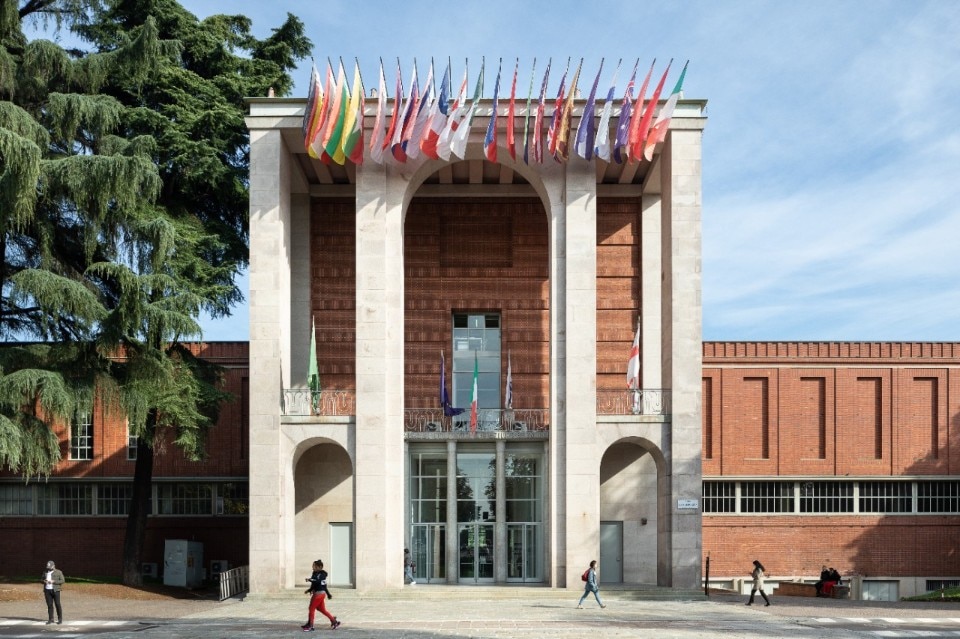From 13 May to 9 November 2025, the Triennale reopens. After the two previous editions dedicated to investigating the anthropic impact on the environment (“Broken Nature”) and the complex (and often inscrutable, even for science) interactions between Man and natural phenomena (“Unknown Unknowns”), this year's theme is “Inequalities”: a reflection on disparities (social, economic, cultural, gender) as an intrinsic feature of contemporary society and as a discriminator for different access to resources and rights, from the right to water, education, ageing well, to the "right to the city’ (Richard Sennett).
A topic that, as Director Carla Morogallo states, stems from a “choral” attitude typical of Triennale's modus operandi and which, as President Stefano Boeri argues, is inseparable and transversal, if not actually prodromal, to any other disciplinary field of debate.
The “multi-curatorial” approach, supported by a rich network of collaborations (from Università Cattolica, Bocconi, Politecnico, Bicocca, to Ospedale Policlinico) is the novelty of this year's edition that hosts, in the spaces of Viale Alemagna, eight exhibitions and as many installations according to a polyphony of accents.
On the ground floor, three exhibitions lead to the discovery of a geopolitical map of inequalities, approached with the analytical and proactive viewpoint proper to architecture, urbanism and design. Starting from one of the most emblematic cases of inequality (the Grenfell Tower fire in London in 2017, recounted through an installation curated by Grenfell Next of Kin), “Cities” exhibition curated by Nina Bassoli offers a choral reflection on the dialectic between wealth and poverty, society and community, ecologies and cities, seeking solutions among projects and ideas of architecture and urban planning. “Towards an Equal Future”, curated by the Norman Foster Foundation, addresses the housing crisis in emergency contexts, presenting Foster + Partners’ projects on Indian slums and temporary settlements for displaced people through videos, images and two 1:1 scale shelter prototypes. “Milan: paradoxes and opportunities” (curated by Seble Woldghiorghis) focuses instead on the city of Milan.
On the upper level, five exhibitions explore the theme of diversity as a (possible) value. “We the Bacteria: Notes Toward Biotic Architecture” (curated by Beatriz Colomina and Mark Wigley) investigates the intersection between bacteria and buildings, reinterpreting inequality through the lens of bacteria. “A Journey Into Biodiversity- Eight Forays on Planet Earth” (curated by Telmo Pievani), in collaboration with the University of Milan Bicocca and the National Biodiversity Future Center, addresses inequalities from an evolutionary perspective, investigating the positive and negative meanings of differences from a biodiversity point of view. “The Republic of Longevity-In Health Equity We Trust” (edited by Nic Palmarini with Marco Sammicheli) addresses inequalities in the sphere of ageing and long-term quality of life. Lastly, “Portraits of Inequalities-Pittura di classe” (curated by Giovanni Agosti, Jacopo Stoppa), in the Triennale Impluvium, tells the story of the Ca' Granda through the display of about fifty portraits between the 17th and 20th centuries depicting the main donors and benefactors of the Ospedale Maggiore, turning the spotlight on how the privileged classes over the centuries have been represented in their charitable work.
Among the curators, there are also Mark Wigley, architect and professor at Columbia University in New York; Hans Ulrich Obrist, director of the Serpentine Galleries in London and one of the most influential curators; Theaster Gates, an interdisciplinary artist who combines social practice, performance, and sculpture. The exhibition will feature projects by Pritzker Prize laureates Kazuyo Sejima and Alejandro Aravena, by Elizabeth Diller of the New York-based studio Diller Scofidio + Renfro, and Boonserm Premthada, architect and artist founder of Bangkok Project Studio, as well as a contribution from artist and filmmaker Amos Gitai.
The visual identity of the event, curated by Pentagram, provides a lucid and implacable interpretation key on inequalities, mapped, unravelled and revealed through pixelated patterns and colour variables that evoke their profiles and dimensions (micro and macro) like a litmus test.
Opening image: Photo Gianluca di Ioia © Triennale Milano


